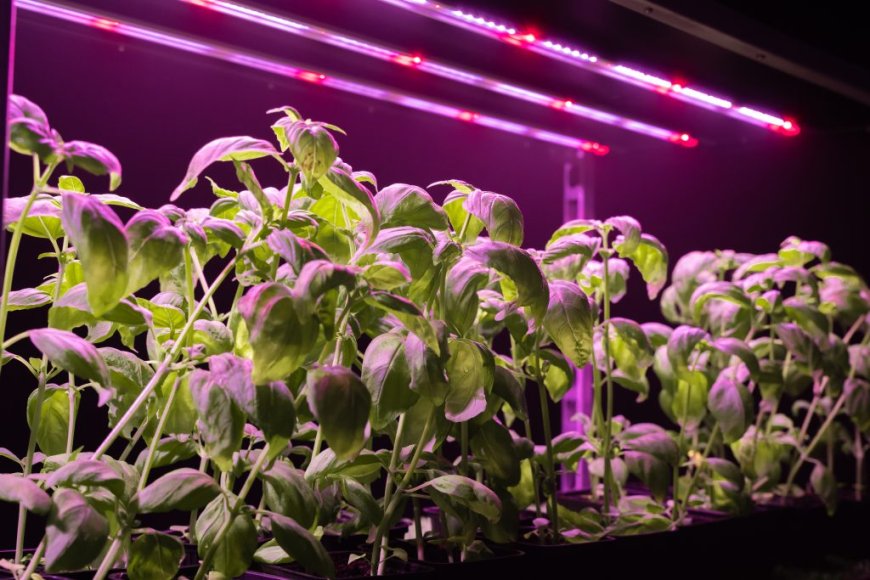Best Tips to Achieve Optimal Yield and Plant Quality in Vertical Farming
Vertical farming is altering the agricultural industry by offering a sustainable solution to meet the growing demand for food in cities.

Vertical farming is altering the agricultural industry by offering a sustainable solution to meet the growing demand for food in cities. Vertical farming maximizes space efficiency while using fewer resources by growing crops in stacked tiers under controlled environments. In this unique farming method, achieving optimal yield and high-quality plants demands careful consideration of a number of critical elements.
Every aspect, from choosing the right LED grow lights to fine-tuning the horticulture LED spectra, has an effect on plant health and productivity. Understanding how to use these traits can help farmers achieve the optimum results, whether they are growing leafy greens, herbs, or more complex crops.
Here are 5 tips to optimize yield and plant quality in vertical farming for both new and experienced growers.
1. Choosing the Right LED Grow Lights
Choosing the correct LED lights is critical in vertical farming. Unlike traditional farming, where sunshine is the predominant light source, vertical farms rely only on artificial lighting. LED luminaires are a popular choice because of their energy efficiency, extended lifespan, and ability to provide the exact light spectrum required for plant growth.
When selecting LED lights for plants, it is important to evaluate the light spectrum they produce. High-quality horticulture lights should provide a comprehensive spectrum that closely resembles natural sunshine, ensuring that plants receive the wavelengths they require for photosynthesis, development, and flowering.
2. Optimizing Horticultural LED Spectra
The light spectrum provided by LED grow lights is another important component that determines plant quality and productivity. Different phases of plant development necessitate different light spectra. Blue light, for example, is crucial during the vegetative stage because it encourages leaf growth and aids in the maintenance of compact structures. Red light, on the other hand, is essential during the flowering stage because it promotes blooming and fruit development.
Farmers can dramatically improve plant quality and productivity by altering the horticulture LED spectra to match the plant's growth stage. Reputable LED grow light manufacturers like Valoya provide grow lights with configurable spectrum to satisfy the unique requirements of different crops.
3. Ensuring Proper Light Distribution
In vertical farming, ensuring uniform light distribution across all layers is essential. Uneven lighting can lead to inconsistent plant growth, with some plants receiving too much light while others receive too little. This can result in reduced yield and poor plant quality.
To avoid this, it’s important to carefully plan the placement of LED luminaires and ensure that each layer receives the optimal amount of light. Some LED grow lights are designed with wide beam angles to distribute light evenly across larger areas, which is particularly beneficial in multi-layered vertical farms.
4. Maintaining Optimal Environmental Conditions
Apart from lighting, maintaining optimal environmental conditions is key to achieving high yields in vertical farming. Temperature, humidity, and CO2 levels must all be carefully managed to create a perfect environment for plant growth. LED grow lights produce less heat than other types of grow lights, making it easier to keep the temperature steady within the growing space.
However, environmental conditions must be monitored and adjusted on a frequent basis to avoid stress on the plants, which can have a detrimental impact on yield and quality.
5. Regular Monitoring and Data Analysis
Regular monitoring and data analysis are vital in vertical farming to spot problems early and make required changes. Farmers can acquire useful insights into growing conditions and make data-driven decisions to improve output and plant quality by utilizing sensors and software to analyze elements such as light intensity, temperature, humidity, and nutrient levels.
Moreover, reviewing data over time can help to fine-tune the growth process, resulting in ongoing gains in plant health and output. Valoya offers comprehensive light plans to help their customers achieve optimal results as per their crop’s requirements.
Achieving optimal yield and plant quality in vertical farming requires a combination of the right technology, careful planning, and ongoing management. With the growing interest in sustainable agriculture, vertical farming presents a promising solution to fulfill the food needs of the future.
What's Your Reaction?














![Noots Focus Reviews [Truth Exposed 2025]!](https://news.bangboxonline.com/uploads/images/202501/image_430x256_678e3b94881a1.jpg)
![Vivalis Male Enhancement: The Must-Know Ingredients [2025 Update]](https://news.bangboxonline.com/uploads/images/202501/image_430x256_678e3b54e396c.jpg)








